The Ferrari nearly fails to materialise. With the official press car out of action, locating a good, representative Roma is proving to be a proper head-scratcher, something we can’t understand.
Since 2020 the model has been the ‘affordable’ departure point into Ferrari-land and sells steadily in the UK. It’s not like we’re sniffing about for a 166 MM.
But then, with days to go, a solid lead surfaces, followed by a friendly phone call, and an arrangement is made to borrow the rather beautiful junior Ferrari GT before you: Abu Dhabi Blue, low miles, factory-correct Michelins. The group test of the year can now commence.
The Roma simply had to be here. For those in the business of building super-coupés with not only prodigious long-range chops but also the potential for both B-road mirth and 200mph, should the opportunity ever present itself on an empty autobahn, it is the product to beat. It’s arguably the most complete Ferrari of modern times, even if it has never been as celebrated as its V12-engined older sibling, the 812 Superfast.
However, the Roma may finally now have met its match. It comes in the form of the latest Aston Martin Vantage, a car whose recent stylistic nip and tuck belies an upwards recalibration of its positioning.
Today our would-be Ferrari slayer is a 656bhp silver sledgehammer with gold wheels and green innards, yet somehow VN59 AML is making it all hang together aesthetically, as perhaps only an Aston Martin can. In fact, regardless of the finishing order, the Brit has already won the game of spiking your pulse from 10 yards out.
The power-crazed new Vantage does indeed look superb: rippling muscle, tight proportions and fabulous details, even if the blinding chrome exhaust outlets are tacked on.
When we stop for a lunchtime sarnie, the people of Kimbolton will gravitate to it, only afterwards noticing the blade form of the Italian car. They will ignore the Porsche Turbo, but that has always been the appeal of a machine that thrums softly while carrying a Californian redwood on its back.
The 911 is, in point-to-point pace, a demon. It is also the most practical car of the trio and the most economical, and when it comes to prosaic but meaningful elements such as infotainment and visibility, neither glamorous rival can lay a glove on it.
As a 911, the handling will have polish to match the Aston’s fake exhaust tips. It may not get the Kimboltonians swooning, but in this sort of contest, against more aristocratic opposition, Porsche’s 911 Turbo is often a cold-blooded killer.
There’s nothing cold-blooded about the Vantage, and it certainly does not in any sense thrum softly. Approach it, peel the door away on its upward-angled trajectory from the devastating contours of the midriff panelling, which sits fully half a foot inwards of the cartoon rear haunches, and enter.
Boy, what a difference a heavy update makes. With no changes to the old car’s body-in-white, the pillbox view forward remains to be savoured, but the fussy switchgear, the awkward centre console and the ancient Mercedes-sourced electronics haven’t survived.
There’s now an elegance the spacious Porsche can’t capture, no matter how much houndstooth and ‘cognac’ leather the £5k Heritage Design Pack levels at its granite-solid interior.
The Aston’s environment will also, as today unfolds, make the economically packaged Roma feel fussy and baroque. In Gaydon they still haven’t quite nailed ‘fit’, but the atmosphere is ebullient GT sophistication. It begs for day-long drives.
Foot on brake and hit the Babybel-sized start button, about which spins a rotary for drive modes. Then nada. It’s a quirk of Astons that the electronics often need a moment to process the life-giving command – and it’s usually just as you’re reaching for a follow-up prod that the starter motor drumrolls from inside that clenched fist of a snout, then boom.
It’s quite the introduction to the most powerful V8 yet fitted to a street-legal Aston and the AMG DNA is right there in the gargling bassiness of the idle.
So, the somewhat new Vantage: stiffer, wider and, holy moly, more powerful than before. It also looks the business and, in a Germanic way, sounds it. But the standout news from a dynamics perspective is not the uplift from 503bhp to 656bhp or the clever Bilstein dampers.
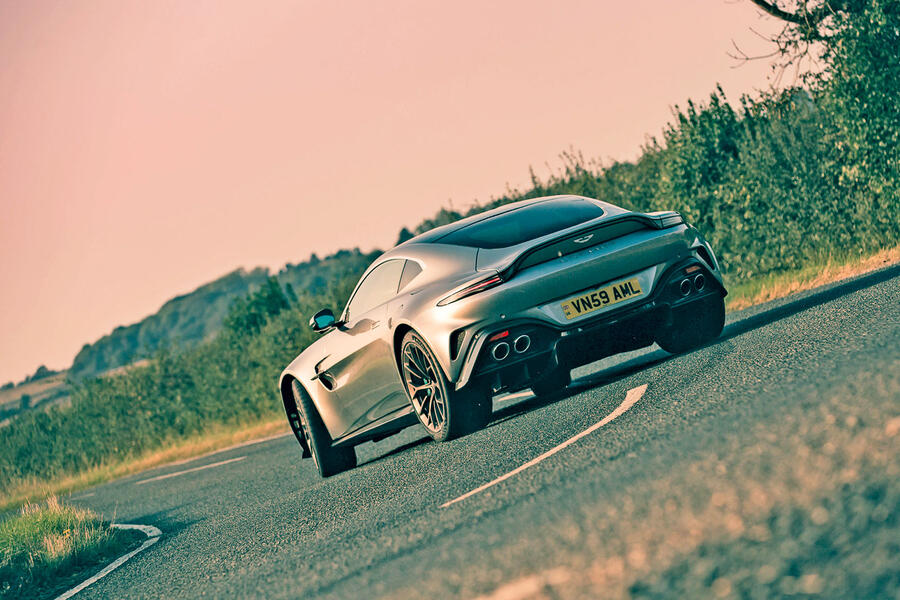
It’s the contact patch: Three. Two. Five. Take a moment to process the width of the Aston’s Countach-like rear Michelin Pilot Sports. Is this a hint that the prevailing philosophy for the Vantage is now one of containment not release?
For context, the 911 wears 315-sections, the Ferrari dances on filigree 285s. The Roma also has less metal between its axles than the Aston, yet with 611bhp from 3.9 litres of blown V8 (a revvy flat-plane; the Aston’s is a cross-plane for maximum torque-wallop), barely any less oomph. On paper it’s feistier.
One thing you soon warm to as those early miles flow under the Vantage’s forged 21in wheels and your relationship with it evolves is how polite this monster can be. Some colleagues consider the ride a tad brittle at low speeds, but to me this is just the Aston’s sense of intent, forgivable because it never spills into discomfort.
The suspension takes up speed bumps cleanly and the car rarely if ever crashes through potholes. You may not love the resolute body movements and hefty steering that are a tangible legacy of ex-CEO Tobias Moers, but this shouldn’t be confused with incivility.
That said, on its smaller wheels the Ferrari is more silken when trundling (another dynamic bellwether?). It is in general less keen to assert immediately how serious it can be. It’s the garden party guest making affable chit-chat, draped over a wicker armchair, Sobranie in hand, while the Aston, preferring more physical interactions, is busy instigating a game of British bulldog.
Mind you, on start-up the Roma is even shoutier than the Vantage, its brusque idle tauter, fizzier. Meanwhile, the Turbo looks on, bemused.
As it happens, the Aston’s gait pacifies with speed. With load the dampers find an easy rhythm on most roads, leaving you to relax into a driving position that is second only to the Porsche’s but within a cabin that is considerably more snug and romantic.
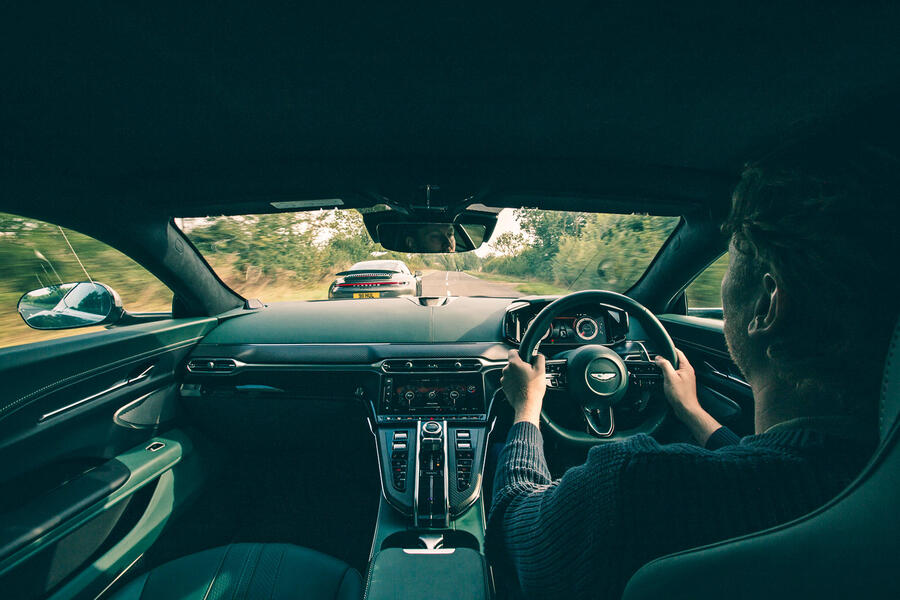
I’ll say now that the footwell in the Roma is short and the footrest absurdly close. If cruising you’re forced to adopt the recumbent pose of David Gandy – one leg straight, the other bent. It is not the dream for taller drivers. Which car is the better distance companion?
The Ferrari’s firm, slim seats are well cupped and seem to plumb you directly into the monocoque, but the Aston’s are more relaxing. The Vantage underlines its slim victory in the matter of grand touring with superior material lavishness.
Its leather is as soft as can be and its rifled rotary controls are a joy to swivel. Underneath it all a seething reservoir of 590lb ft makes swift progress seem almost involuntary.
The Turbo lacks true long-distance charm on account of its firm back axle, needed to cradle 3.7 litres of flat six and, in the case of our £181k Turbo S, the almighty 641bhp it is ever-prepared to release.
On the motorway the breathy roar of the Pirellis drowns out the exhaust and almost all else. You find yourself incrementally ramping up the volume on the excellent Bose system to the point where, were an F-15 Eagle to swoop down and fly directly overhead in tandem, you may not hear it. If an F-15 could catch you, that is.
The Turbo is nevertheless a fine place to start when it comes to the ‘proper’ driving part of this test. It is the constant, the control, the palate cleanser. One run along the B660 is all it takes to remind you why Porsche, now an SUV maker, is still celebrated as perhaps the world’s finest purveyor of serious performance cars.
You can’t help but marvel at how a colossally blown flat six can be so responsive, seemingly unsullied by turbo-typical woolliness. There are no wrinkles in the calibration of the controls: throttle, brake and steering responses are robust but exact. And so linear.
They complement one another seamlessly and in a manner that is all the more astonishing when you consider the Turbo S has the added complexity of front driveshafts and rear-axle steering.

The Ferrari and Aston Martin have neither, yet their drivers need longer to gel with either car. They also lack the Turbo’s seat-of-pants feel, which is akin to a reassuring embrace in the Wild West of 600bhp-plus GTs.
So you begin to get stuck into the 911 with some relish. The process starts by rotating the drive mode selector, nestled against the airbag cover, from Normal to Sport Plus.
This brings the powertrain to the boil, but you must then dial the dampers back into their relaxed state via the dash-mounted toggle: anything else is too firm on British country roads.
In any case, so genetically nailed down is this frog-eyed assassin that you need to allow every last ounce of verve to escape in the form of body movements.
Such is the Porsche’s immense transparency and your faith in its predictability that you also have no qualms peeling back the ESP – not entirely off, but halfway. And now the 911 Turbo S is ready to blow your mind.
And it does, finding total traction and unrelenting thrust in such improbable places that you spend half the time holding on, waiting for the nose to rise up off the road.
It never happens, the car instead remaining contained, precise and freakishly absorptive – and, yes, still a little bemused by your efforts. Herein lies the conceptual blindspot of the 911 Turbo: driven at seven-tenths, it has spellbinding accuracy and purity.
It is richly rewarding simply to be at the controls, but it is unremittingly locked down. Then, driven at a mad-eyed nine-tenths, you’re subjected to stupefying forces that should not exist in the context of an urbane super-sports model with CarPlay and Isofix.
In these moments the Turbo starts to exhibit a sublimely mischievous dynamism otherwise kept well hidden. You can see the problem, though: at the crucial eight-tenths point the Turbo is peculiarly inexpressive.
There’s no question that the Porsche is the quickest car here, but if the aim of group tests is to learn what one car can reveal about another, its presence amounts to more than a predictable conclusion regarding outright pace.
After driving the Turbo you notice that the Vantage’s steering is rather uncommunicative – oddly so, given that Aston Martin has gone to the trouble of removing the steering-column damper for the new car.
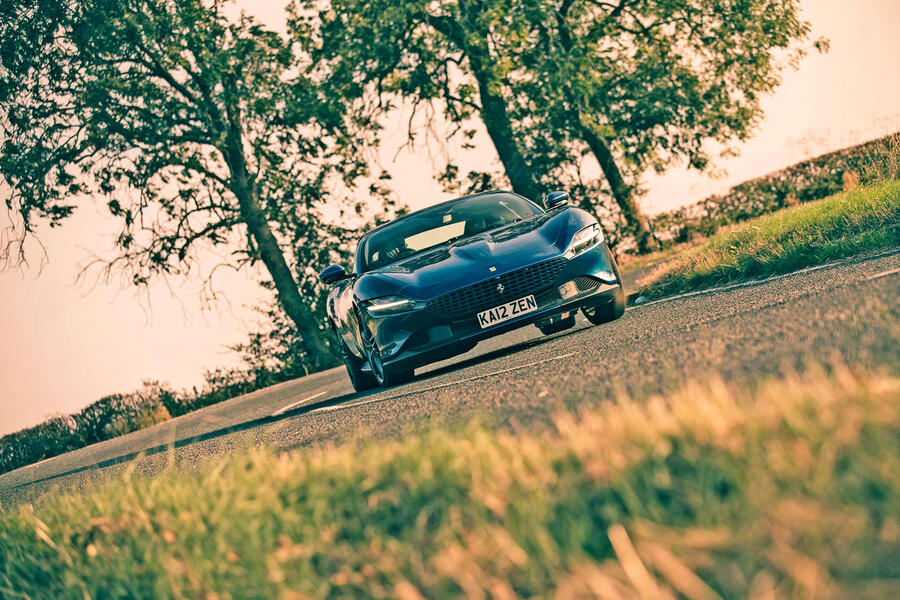
The Ferrari’s brake pedal is also damnably sensitive, to the extent that you never truly acclimatise to its snatchy proclivities. In an otherwise delicate machine, this has to count as a glaring error.
The torque-bomb V8 of the Aston also lacks top-end frivolity and mechanical intricacy compared with the Porsche’s outwardly demure but actually quite expressive motor. Meanwhile, the nasal F154 V8 in the Ferrari gets sweeter as you extend it.
Dare you feed it those revs? In the sprint to 62mph the Roma is not in the same race as a 911 Turbo, so why does the process of opening the throttle feel even more heart-stoppingly exciting? There are several factors at play.
For a start the Ferrari has one of the longest and most deliciously sprung accelerator pedals in existence – it’s a Maranello calling card that is particularly evident here.
Combined with the roiling, intensifying exertions of that waspish engine, the sensation of momentum amassing at an increasing rate is magnificent.
After alighting the Roma’s high-sided cockpit from a B-road blast, you will of course also have flicked the manettino dial to Race, for the crisper shifts.
Another result of this is that you will have loosened the traction control a touch, and it is the sense of barely contained explosivity that makes the Roma’s delivery so memorable.
In the Turbo, and to some extent too the generously tyred Aston, you simply bury the throttle and blast forth. It gets samey. The Ferrari, meanwhile, dares you to have its slim, drilled aluminium pedal kiss the bulkhead as the rear axle squats and the tyres surf past the point of total traction.
No two corner exits are the same. Allow heavy-footed greed into the process and the Roma gets frisky. In the Aston, you’ll most likely get away with it; the 911 simply vanishes.
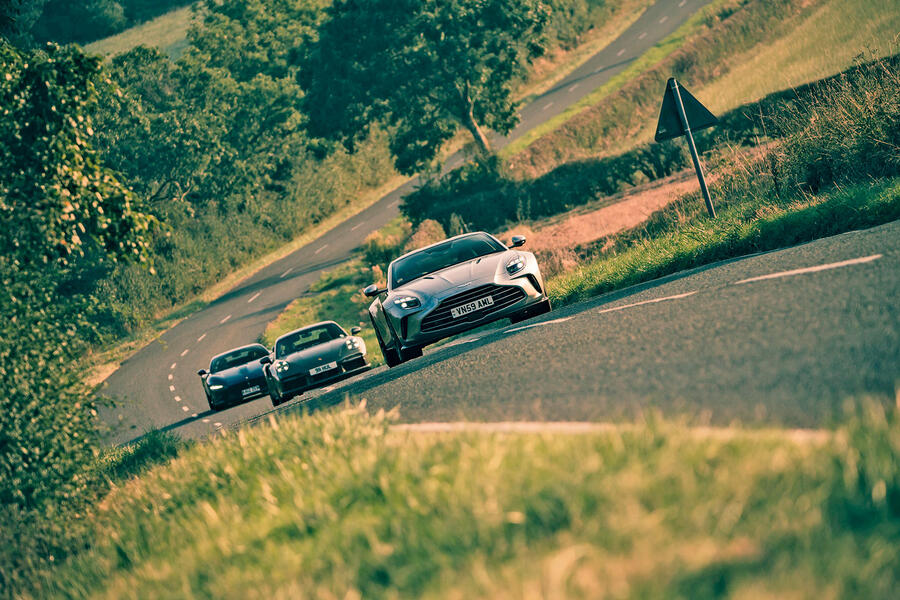
As an unexpectedly sun-soaked afternoon rolls on, it becomes apparent that security – not just in the sense of straight-line traction but also in broader handling terms – is the defining quality of this test. The Turbo makes a virtue of security, but the Aston and the Ferrari take more nuanced approaches – approaches foreign to one another.
Vantage first. This car operates on something of a two-dimensional plane: the suspension’s job is to keep the dreamboat body level. Simple as. Do that and the vast contact patch is preserved, allowing maximum powertrain-uncorking.
Slot the dampers into either of the upper two of three levels of firmness and, barring some heave in extreme circumstances, it’s a job done well, to the extent that the grippy Aston often feels barely slower than the 911. This is, to put it lightly, crazy.
One’s ability to confidently tuck into the car’s reserves of power and torque, smug in the knowledge that the electric limited-slip diff, the tyres and the body control have got your back, paves the way for the Aston’s next trick: outrageous throttle-adjustability.
The steering has a steady accuracy about it that means darting into bends comes easily enough, and when it’s time to re-enlist the services of that smouldering, volcanic powertrain, the Vantage will play around in a manner so good-natured it is at times unrecognisable from the old car.
The new car thus has two distinct personalities: it is mostly a sure-footed, monolithic GT, but it also has the ability to get neatly out of shape on demand.
However, this feels like a bolt-on feature; there isn’t much blending between the two states. The Aston also flirts with feeling a tad overwrought.

But overall, for a small car with a giant heart, boy, this thing is cohesive. And so damned quick. There’s no point today when I don’t revel in letting it rip through the lower gears, letting its nose cleave assuredly into bends, then zipping out the other side.
Yet certain elements hinder it, and they are elements quickly and indelibly exposed by the five-year-old Fandango.
The Roma’s handling is three-dimensional. The car is beautifully damped and loves to duck and weave. It does so with such free-spirited zeal you would swear the 100kg deficit in kerb weight it has to the Aston Martin must be double that.
In its deft vertical control there’s a lack of inertia you would expect to find in a little Toyota GR86, not a 611bhp four-seat Ferrari.
And yes, the brake pedal is a bastard, but the throttle is a beauty and so is the steering wheel. In contrast with the Aston, the rim has an almost ornate slenderness to it and the action is swift but stops well short of feral-ness. A superbly gratuitous paddle-shift action too.
It is the sequence of events set in motion by the steering wheel that takes your breath away as surely as a fully lit Turbo S forces air from your lungs.
The Roma skims along B-roads carefree, then HALO-drops into bends with laugh-out-loud poise, exploiting a set-up that permits more dive and roll than the Aston (by now you will have pushed the damper-taming ‘Bumpy Road’ button).
I had a suspicion that tip-in on the Aston was dogged by momentary front-axle push, and the Roma gleefully confirms it. The Ferrari doesn’t so much ‘corner’ in set-piece style as seamlessly transition its course with a sequence of fingertip commands. And a juicy slither of yaw, if you like. It’s unadulterated flow.
Both cars have transaxle layouts and perfect weight distributions but present contrasting interpretations of their pedigree format. Popping the long bonnets is also revealing: the Aston motor is nicely sat back, while the Roma’s is not only sunk deeper but also tucked half-beneath the dash.

Then there are those contact patches. Here, well, it’s different religions. What the Vantage wears at the front are a close match to the Roma’s rears. The Roma is a freer creature; the Vantage, so careful to control its mass and deliver its power, locks it all down.
So less is more, right? Apparently. The fastest car here finishes last, even if the 911’s only true shortfall is rolling refinement. In every other sense it nails its brief, which is to be an almost miraculously quick point-to-point street fighter you would happily commute in.
I should point out that if this test had instead involved a 296 GTB and a McLaren Artura, the Porsche would as happily have got stuck into the mid-engined cars.
Next, the Aston. The most powerful and cartoonishly imposing car here is an honourable second. It is the finest outright grand tourer of the three, and owners will adore not only its ability to put power down but also its theatre, usability and sense of unconquerableness.
Which leaves the Ferrari. The slowest, oldest car. But also the lightest, the most exuberant and the one that best understands what can make an old-school GT addictively sweet to drive.
In truth it’s a bit of a shock just how good the scalpel-sharp Roma remains. All three of these machines are wildly good, of course. But the svelte Italian? So close to perfection it hurts.
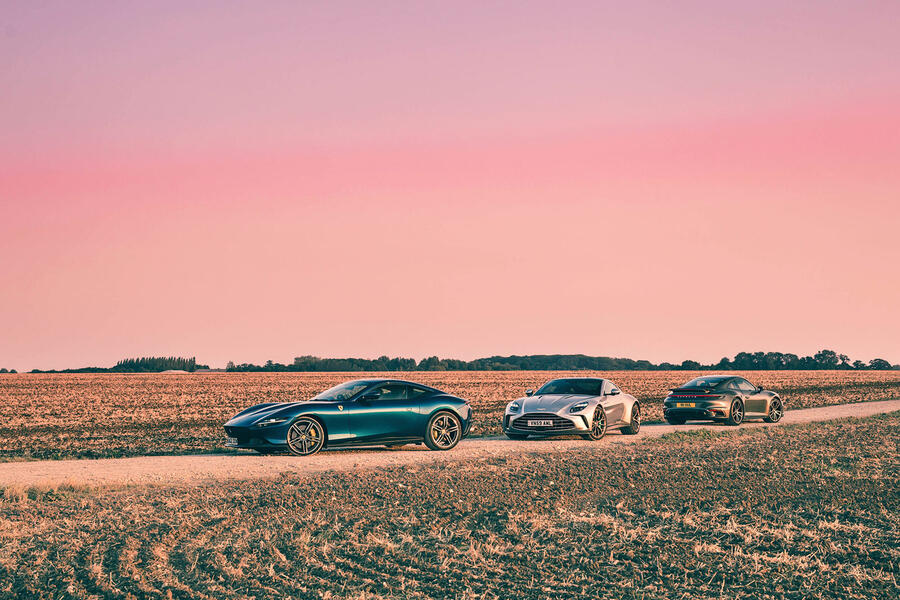
1st. Ferrari Roma
Ferrari knocked it out of the park with the Roma. It’s affable and prodigiously talented, with an almost mid-engined fizz about it. Usable too. The GT car as an art form?
2nd. Aston Martin Vantage
Indefatigable motor sits ahead of a newly superb cabin. The finest mile-crusher here and joyfully spirited but trails the Roma as a finessed driver’s car. Oh so easy to love.
3rd. Porsche 911 Turbo S
Porsche’s exhibition of speed and control is the quickest car here and ridiculously easy to live with. Brilliant but necessarily aloof at times, and it cruises noisily.
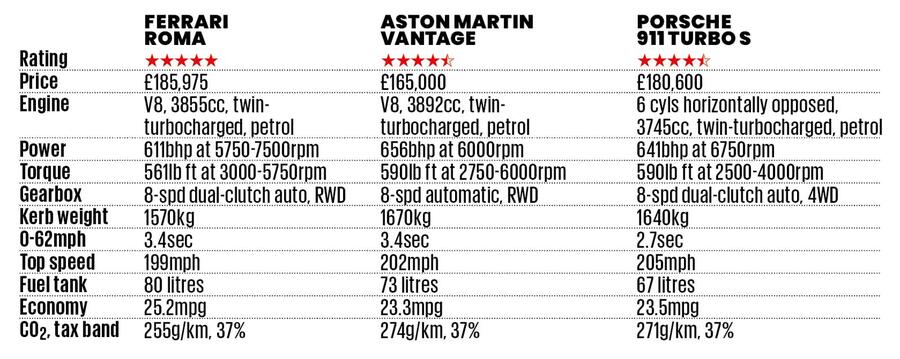

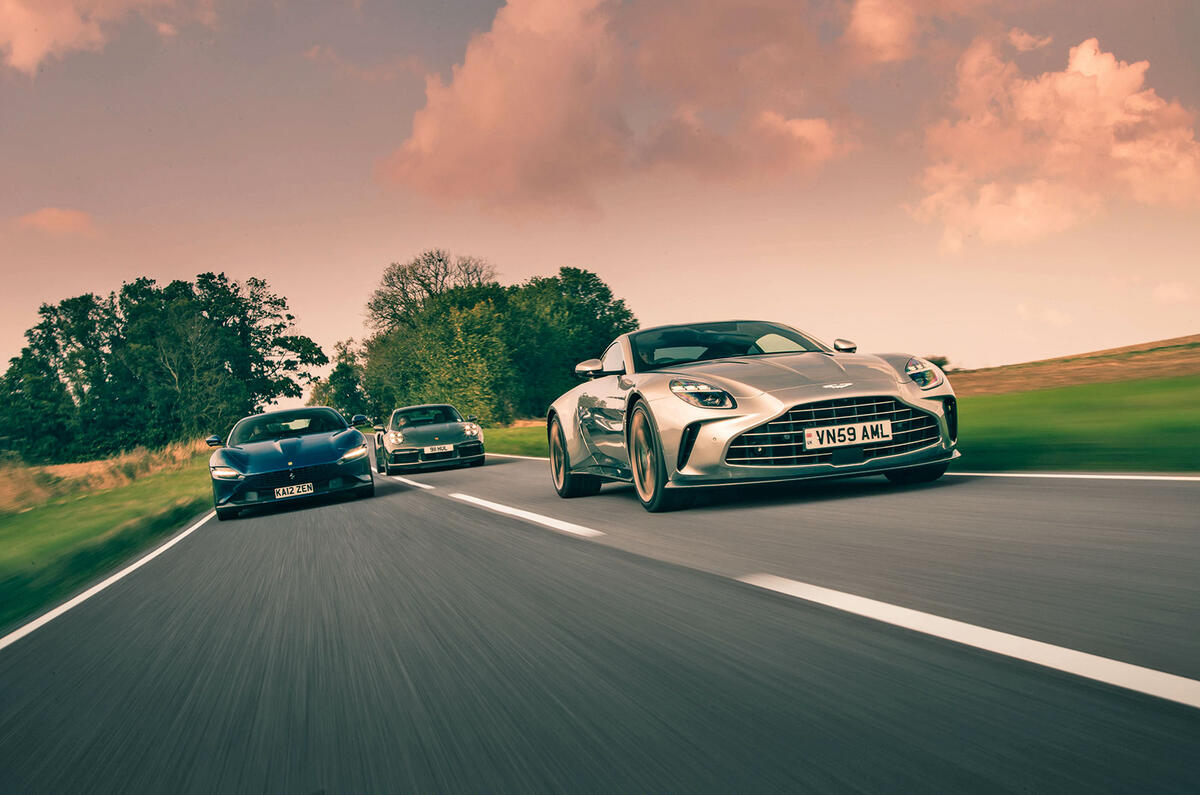
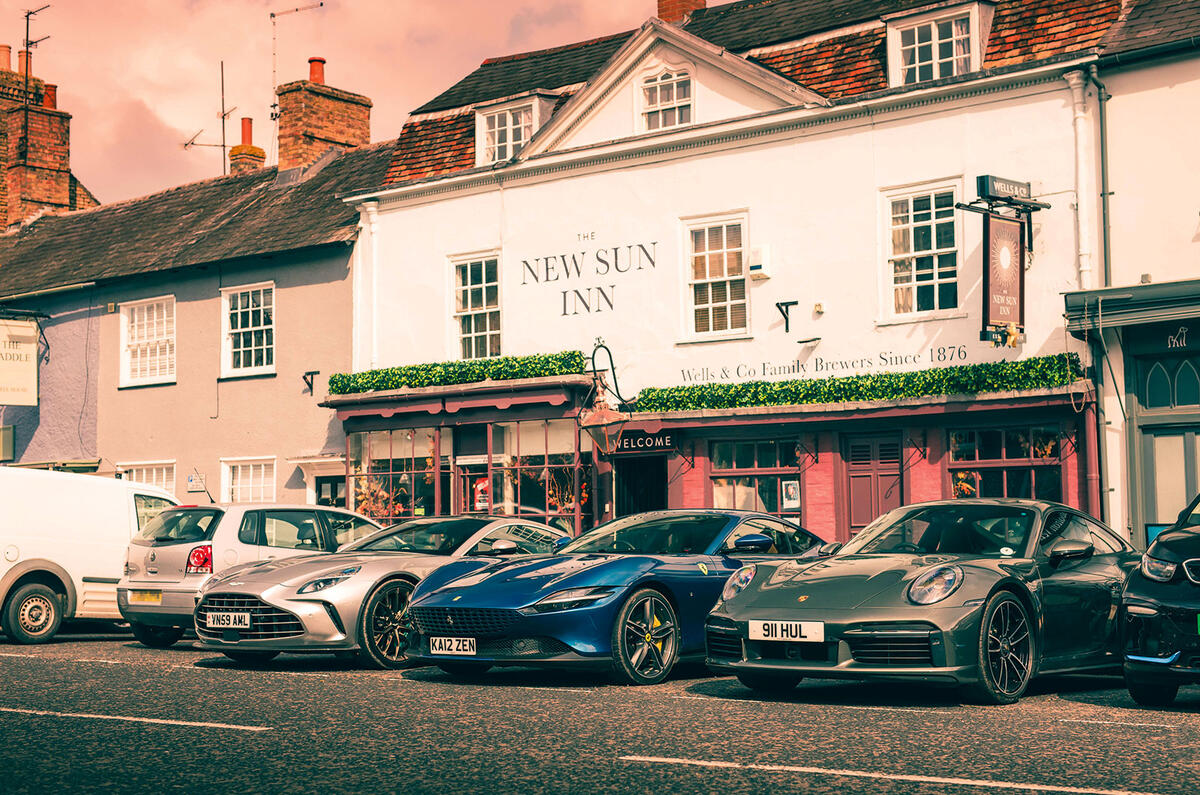
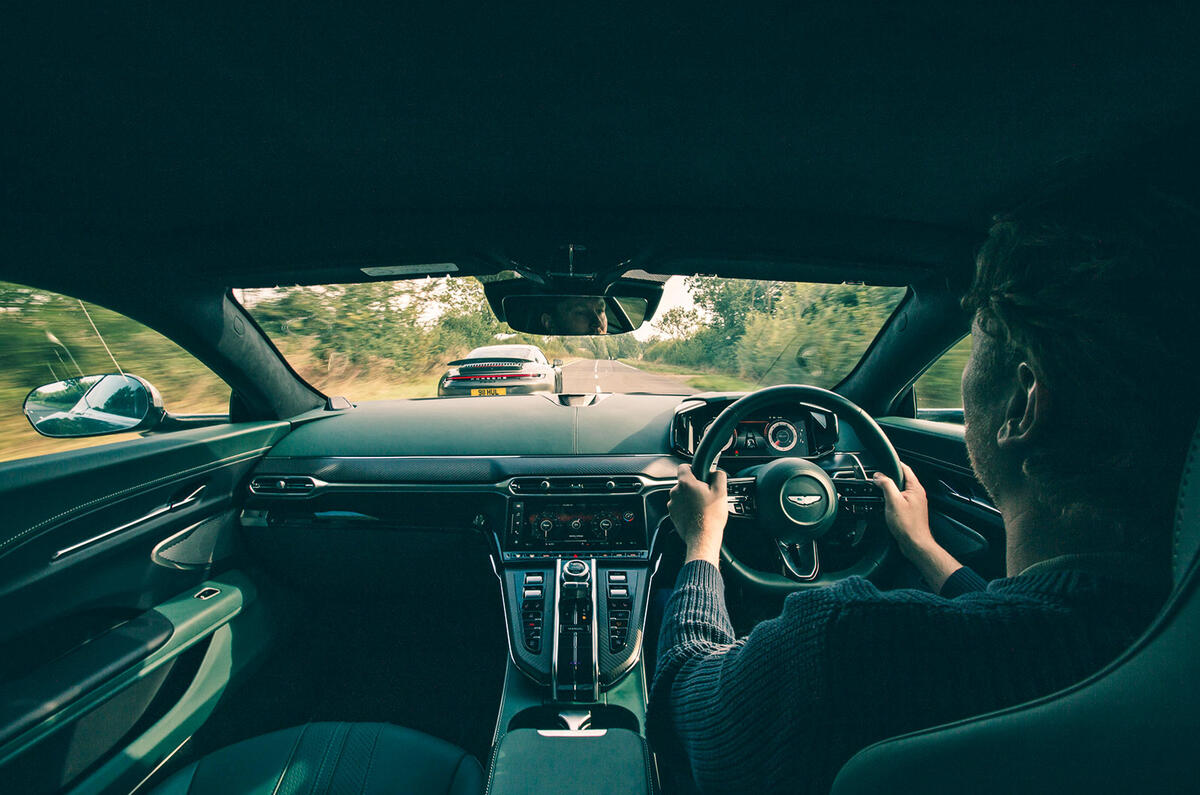

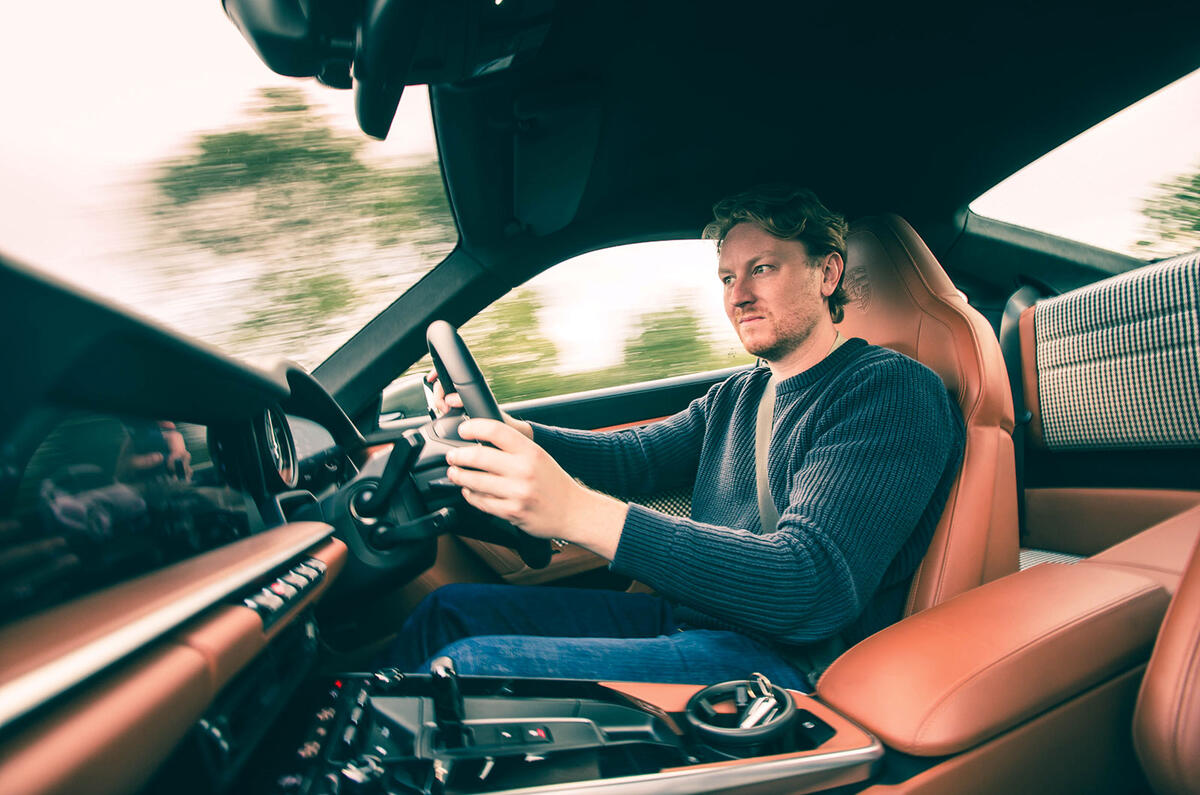

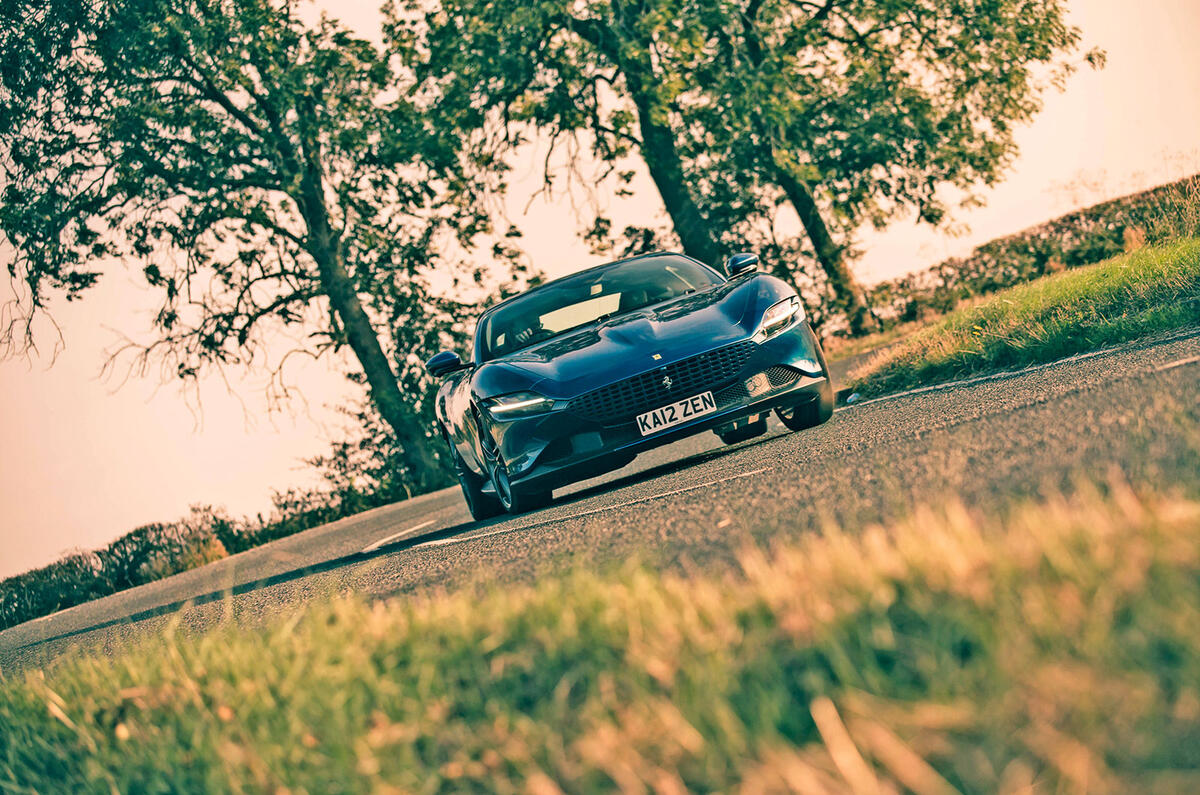
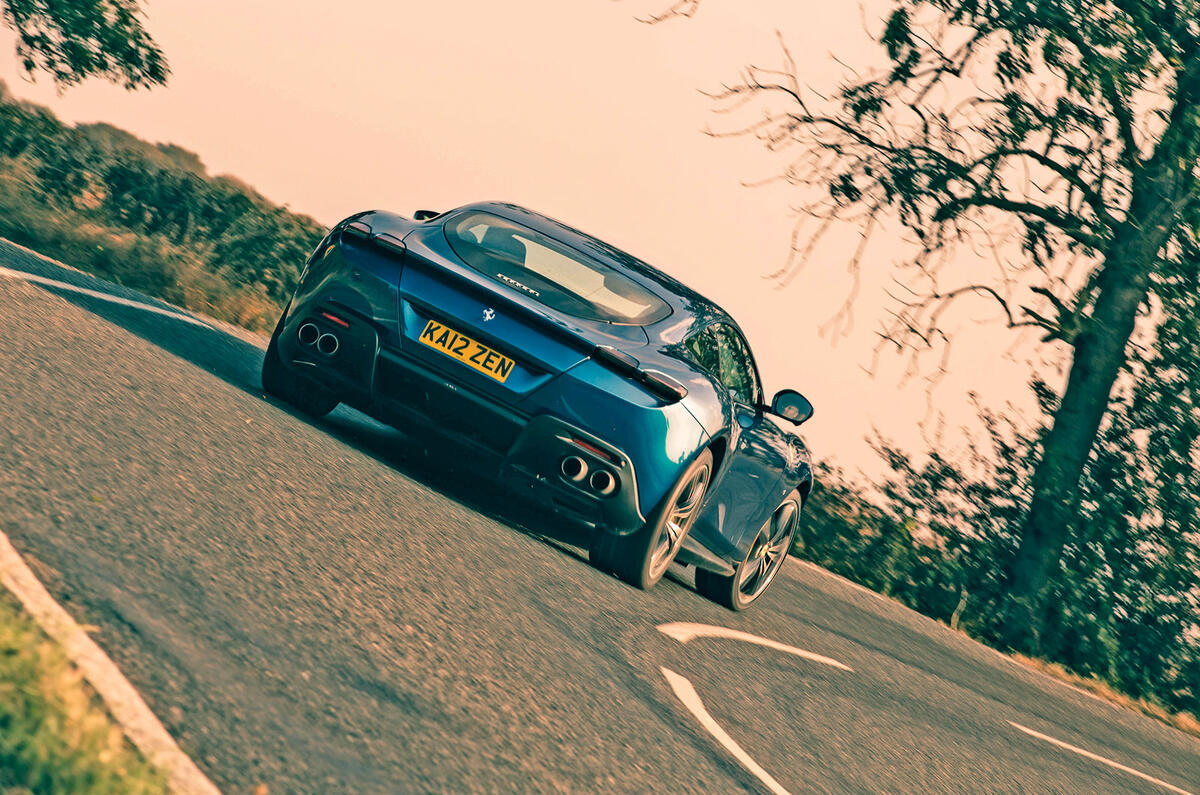
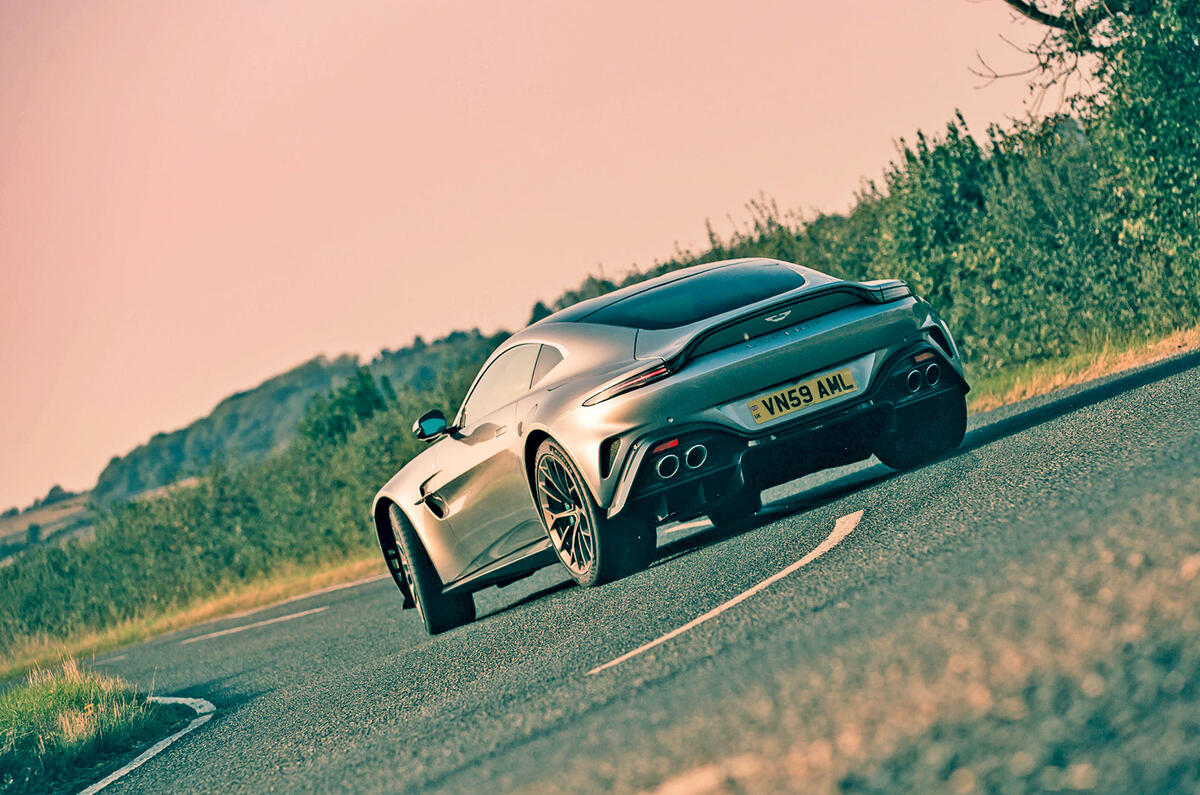
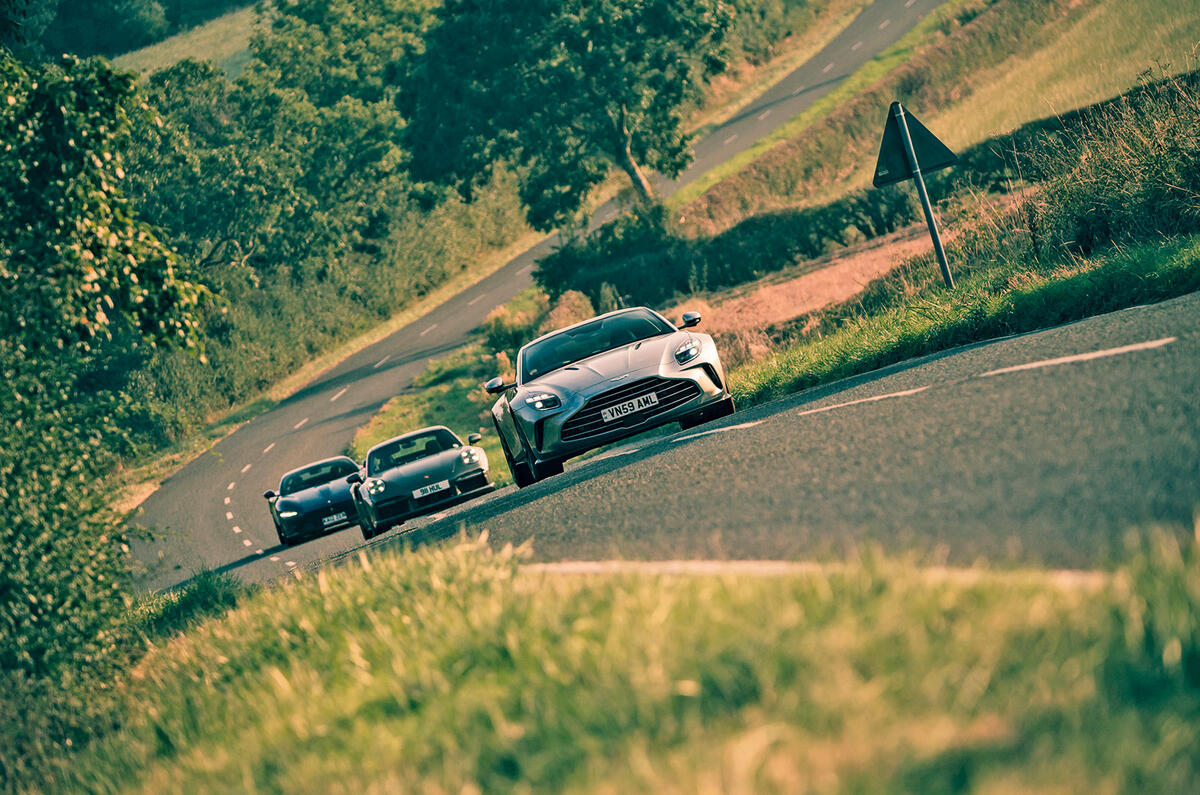
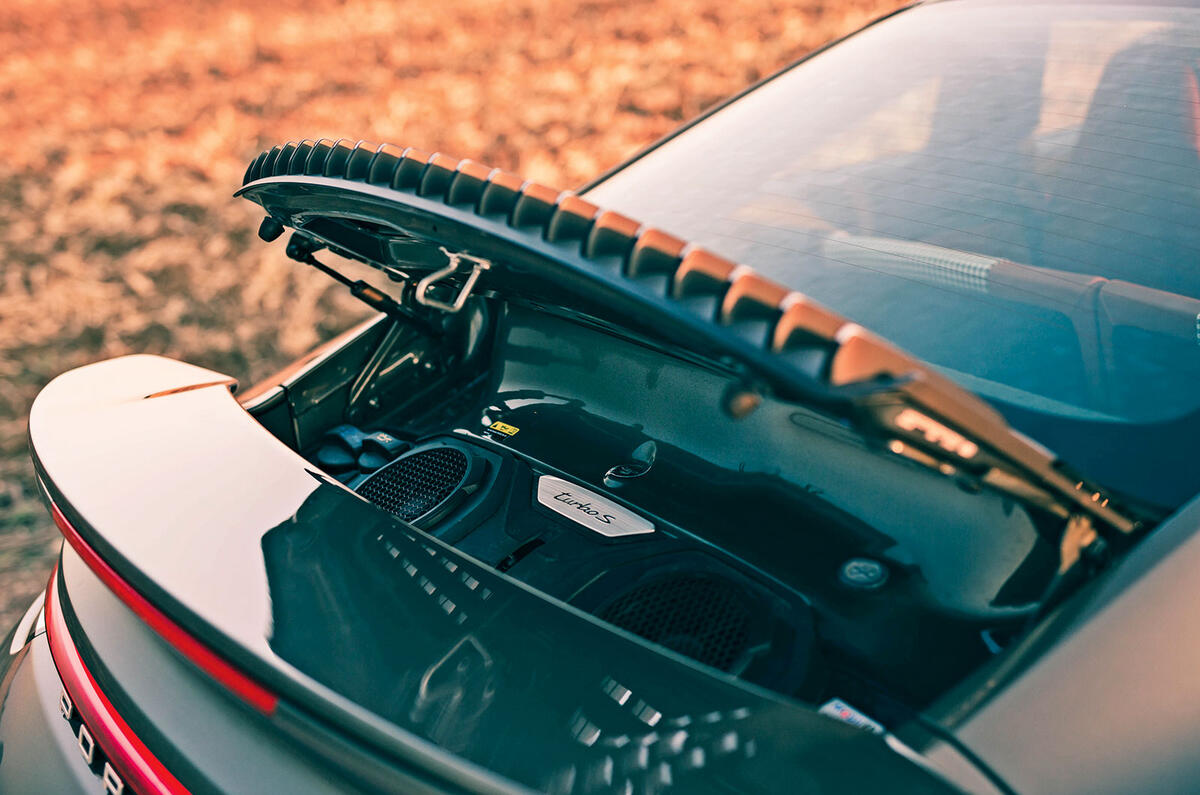
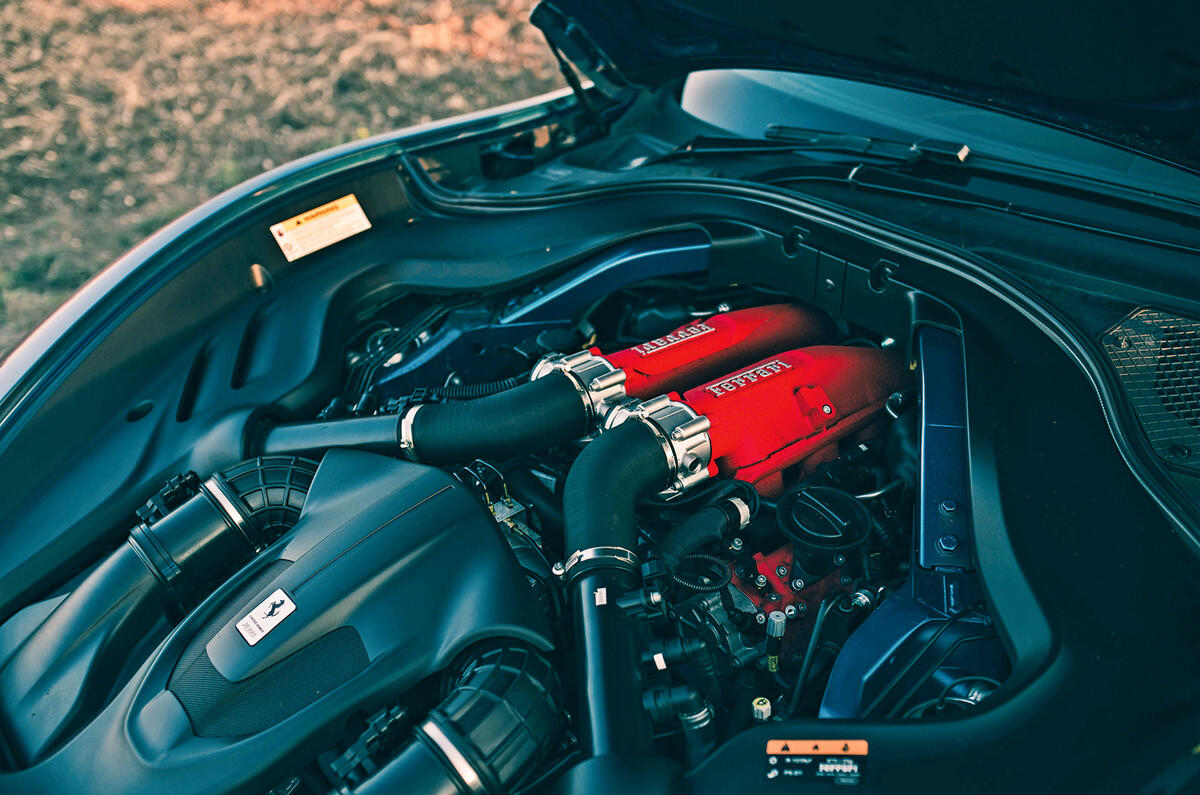

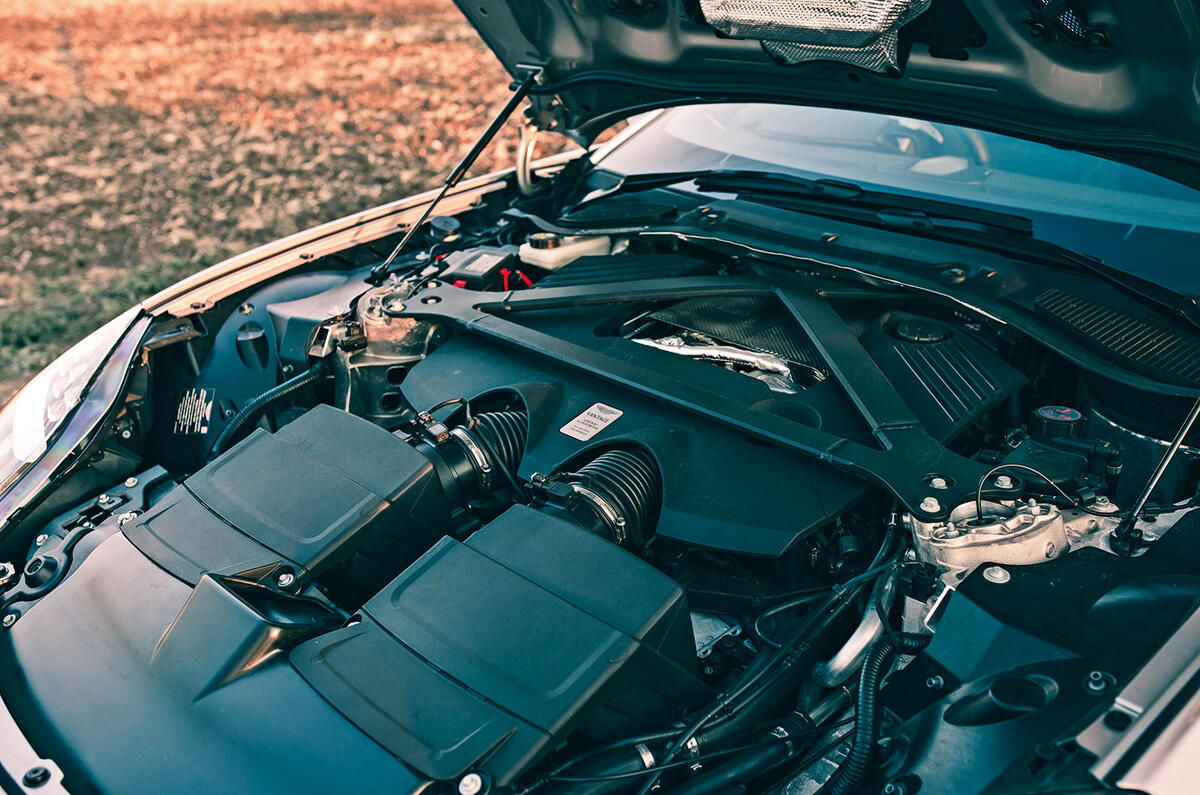
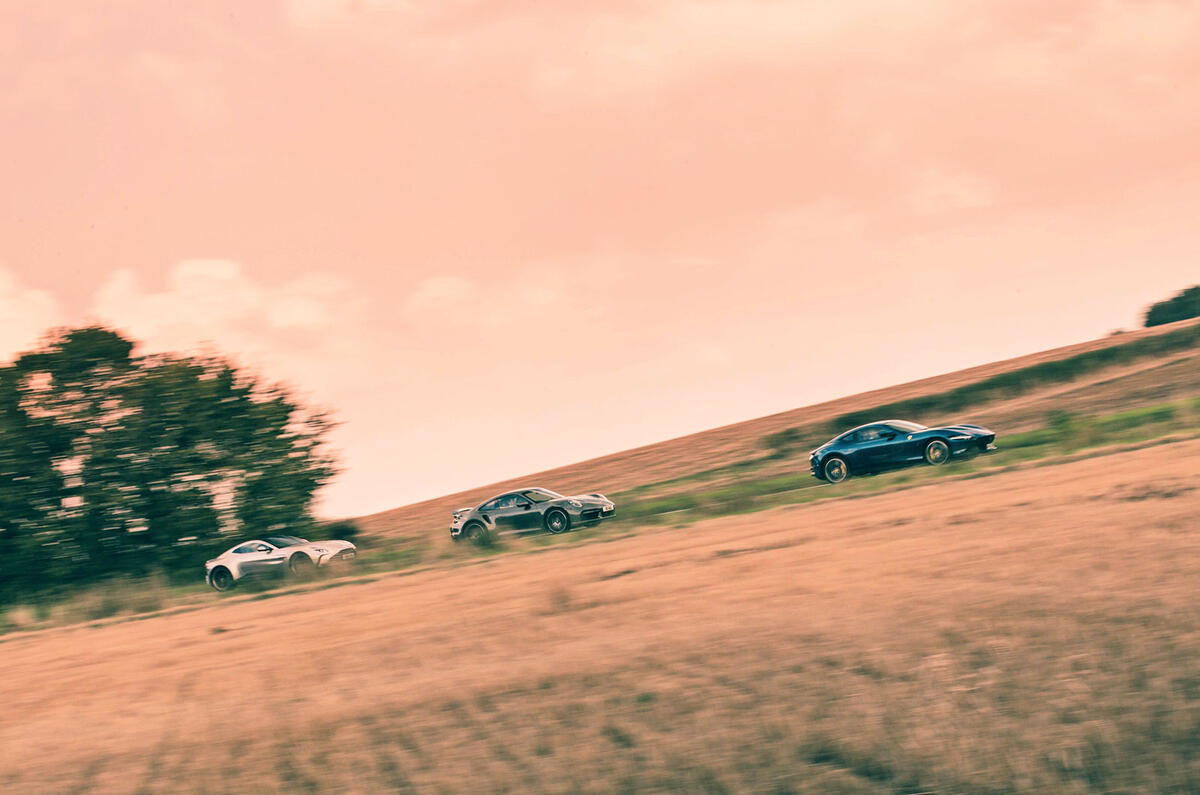
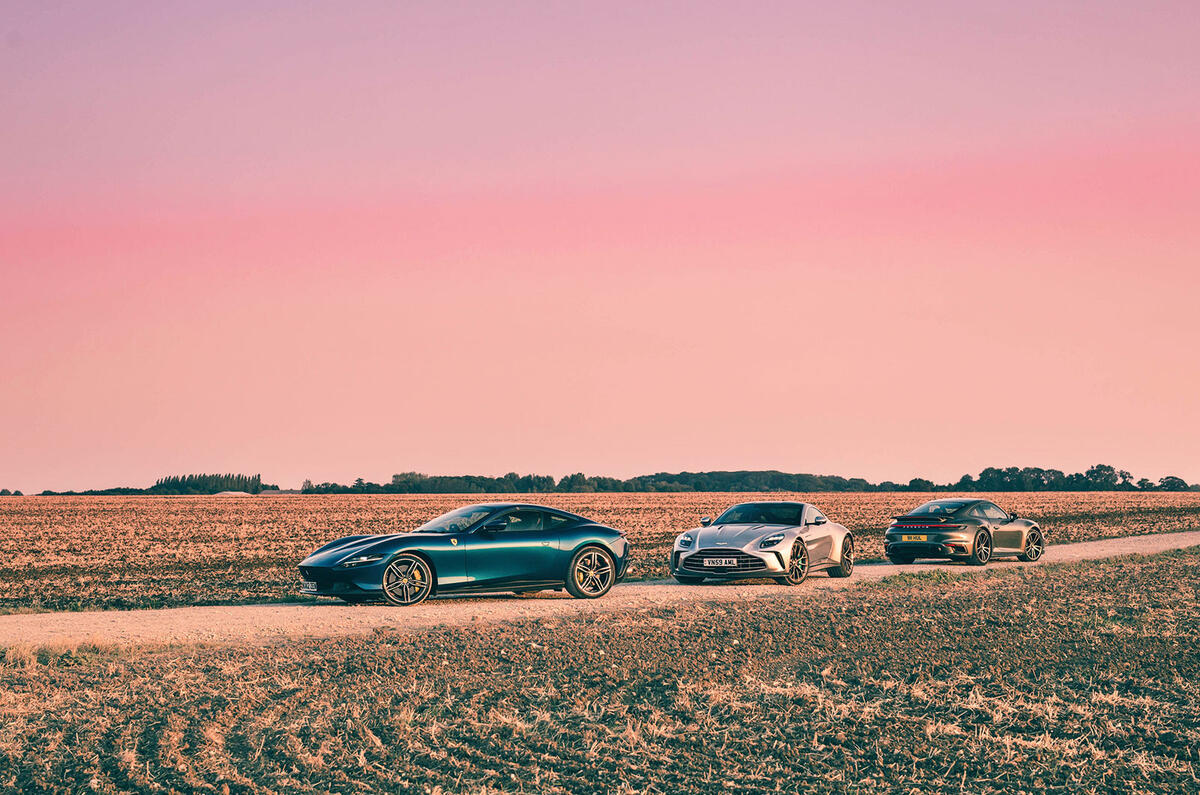








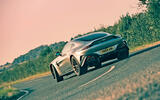


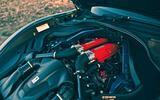










Join the debate
Add your comment
Literally incredible that one can have the brutish, characterful, bespoke, exclusive, wonderful Aston for LESS than the fast VW!
These are 3 completely different cars, and it's great all 3 exist.
The Roma is the elegant super tourer, and is probably the most beautiful sports car on sale, full stop. Note - they've stopped Coupe production, you can only order the Spider now.
The Vantage is the thrill a minute bruiser, and looks great. It's what a sports car should be.
The Turbo is the all purpose, all weather supercar slayer.
Totally agree with your opening sentence, and really pleased Autocar placed the 911 turbo in last place, it might help reduce the wait times. When I had use of a turbo s a few weeks ago it appeared to me that the car had way more power than I needed to tap into in day to day driving. When I returned it and was talking with the Porsche service manager, he commented that the 'new' one coming in 2025 has hybrid assist and is noticably quicker at lower speeds to compete with EV's. I would happily trade that extra grunt for less bulk, surely that's the way to differentiate berween ICE and EV's?
No wonder Aston can't make a profit, why is the Vantage priced so low? Should be same price as Ferrari, and definitely more than a 911. Surely Aston see themselves as a more premium/desirable brand than Porsche?